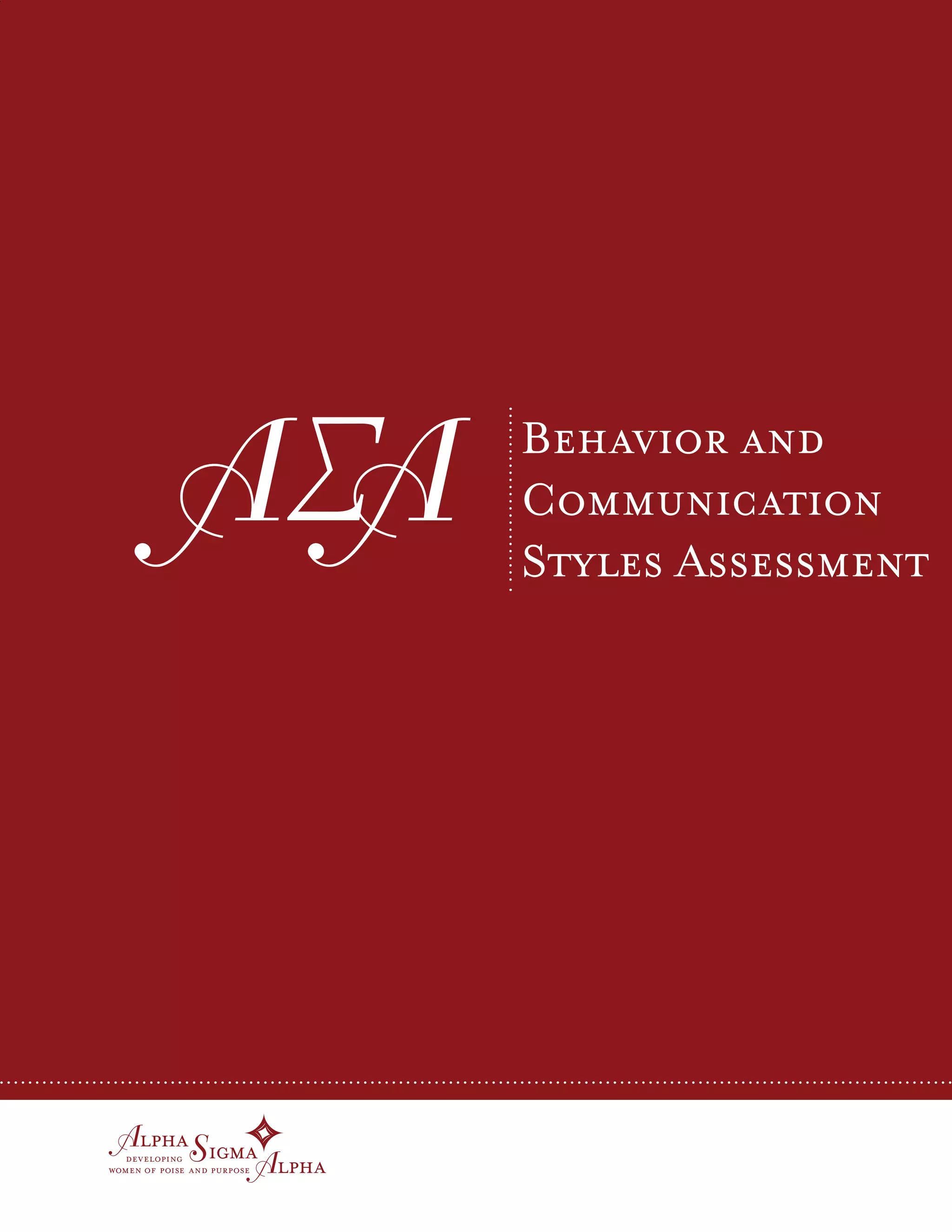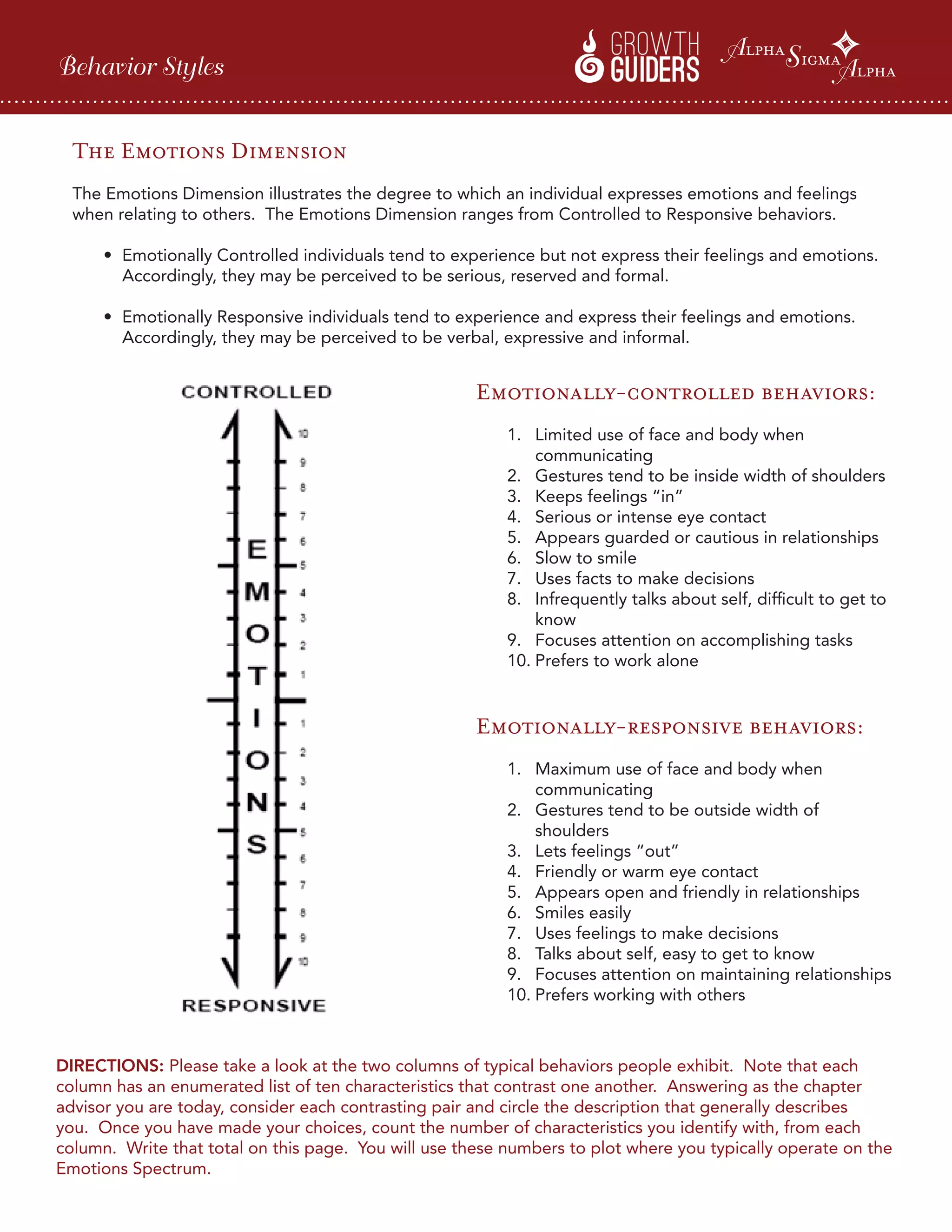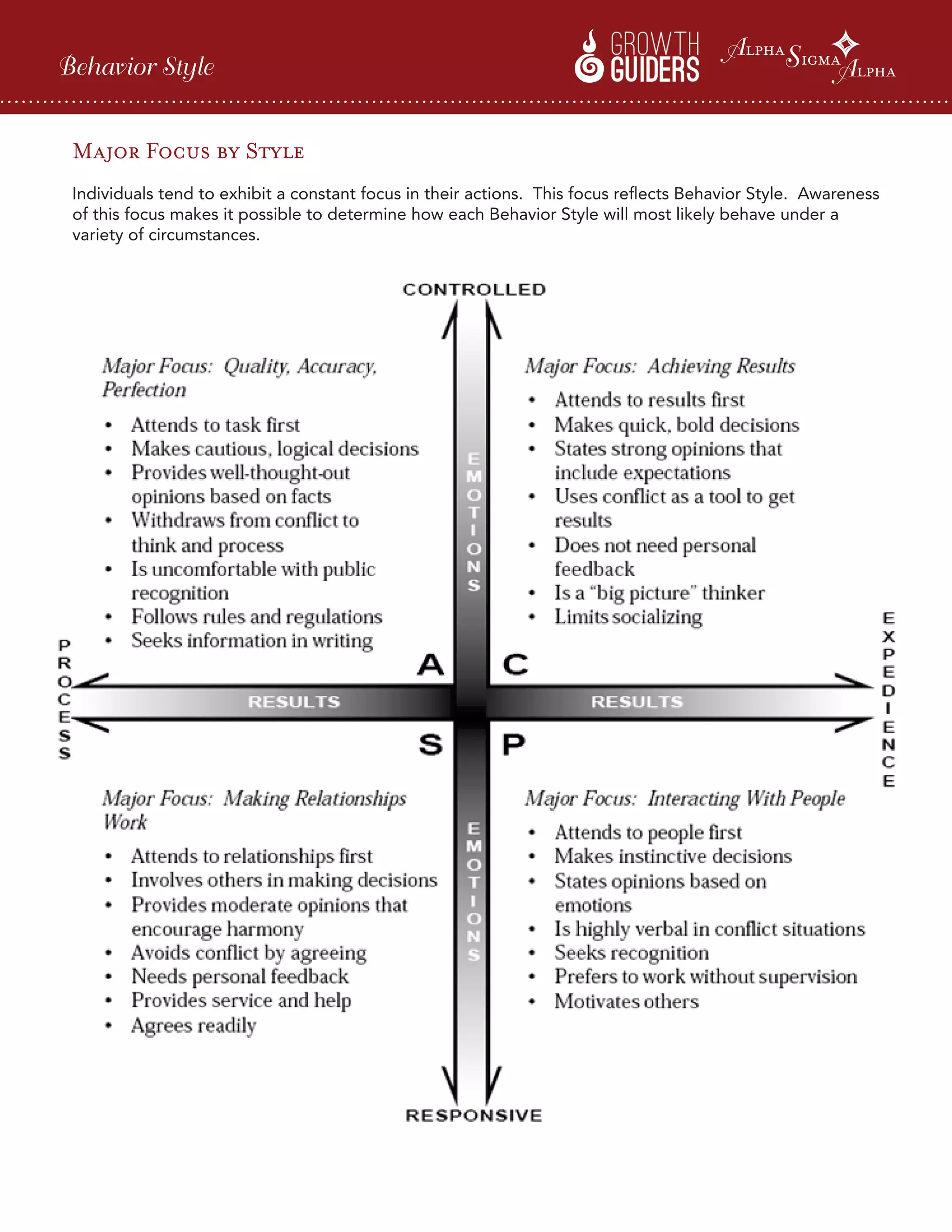This document provides information about behavior and communication styles. It includes an assessment for individuals to determine their primary and secondary behavior styles based on where they fall on the results and emotions spectrums. The four main behavior styles are analyzer, controller, persuader, and stabilizer. It also matches primary-secondary behavior style combinations to nine different communication styles (commander, planner, facilitator, cheerleader, nurturer, guide, teacher, and disciplinarian). Each communication style includes a descriptor, how it interacts with others, strengths, and challenges. The document aims to help individuals understand their own and others' styles to improve relationships and effectiveness.












